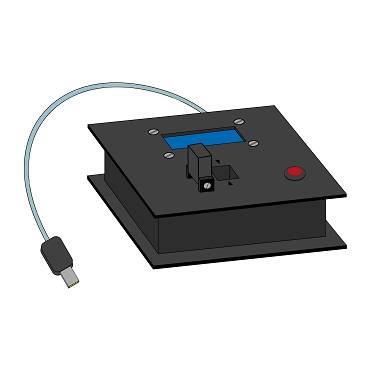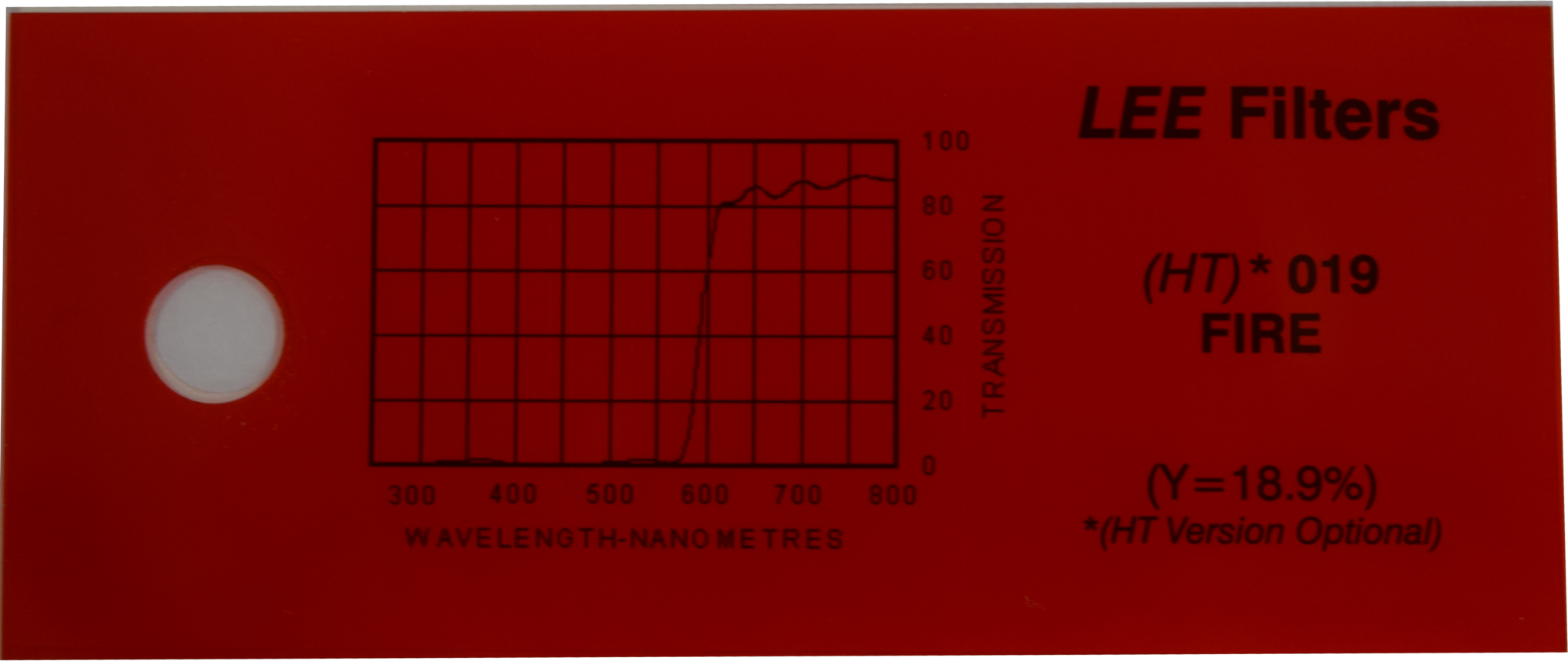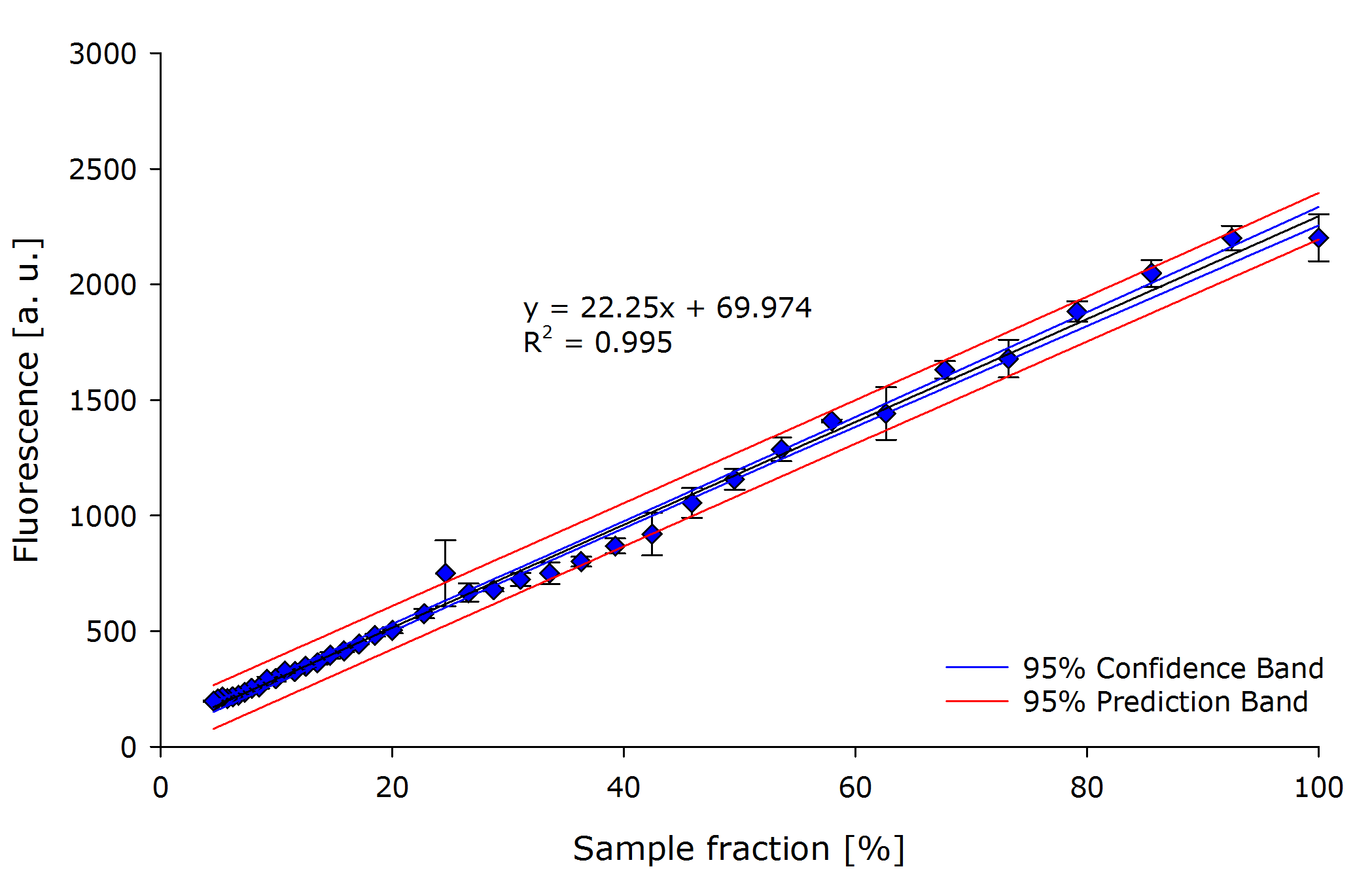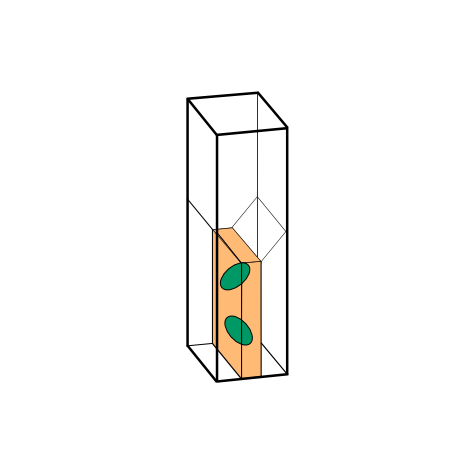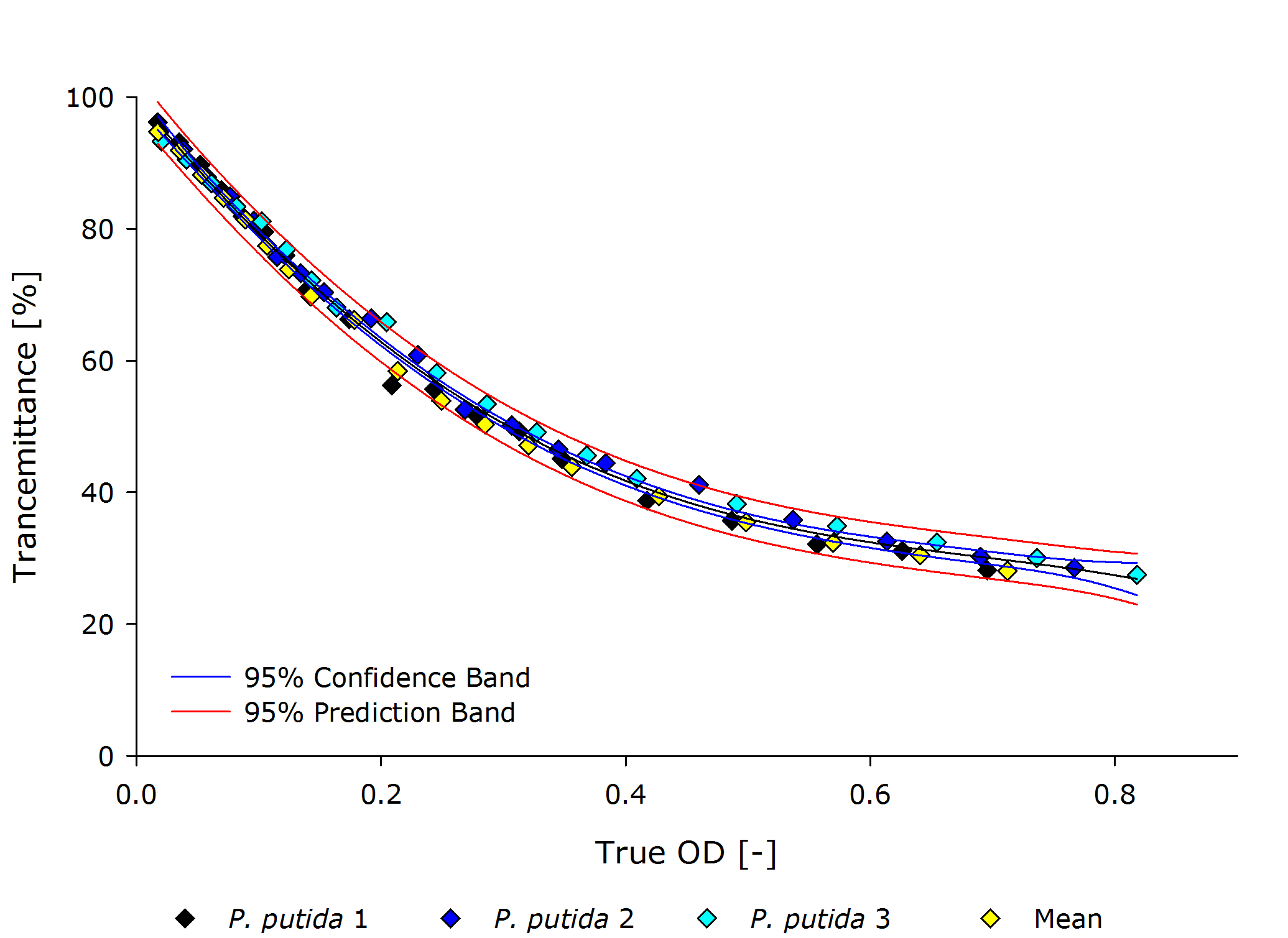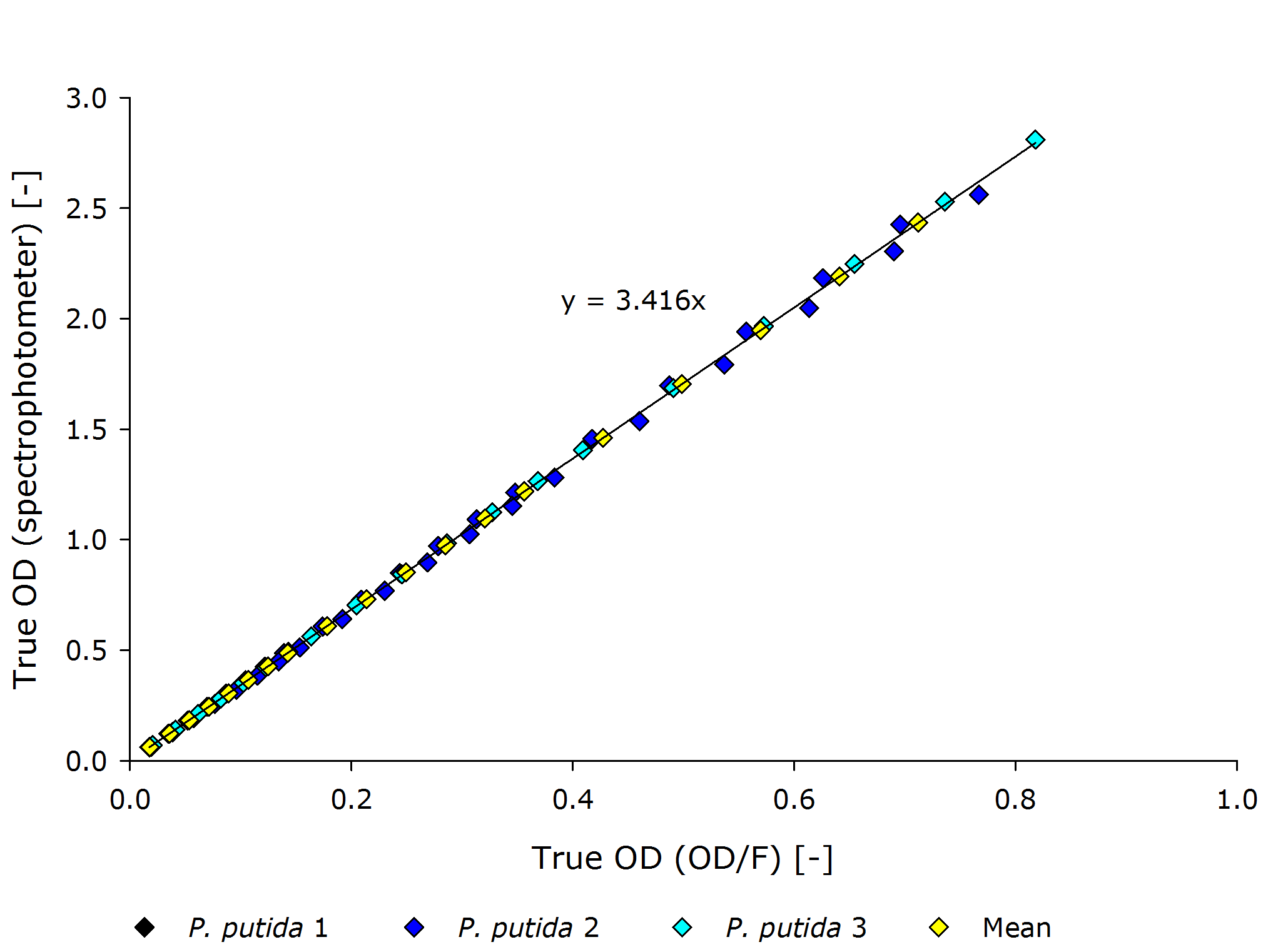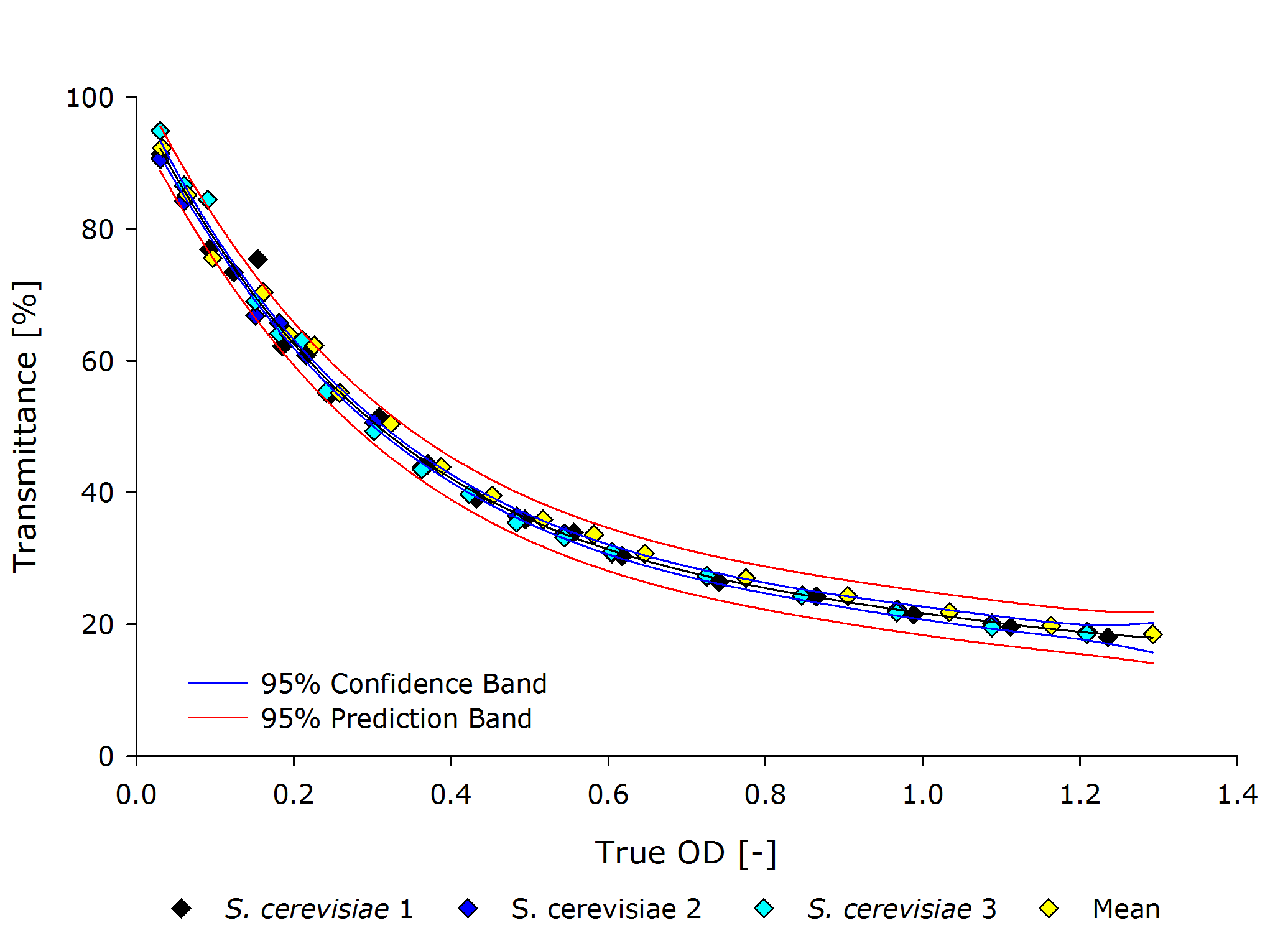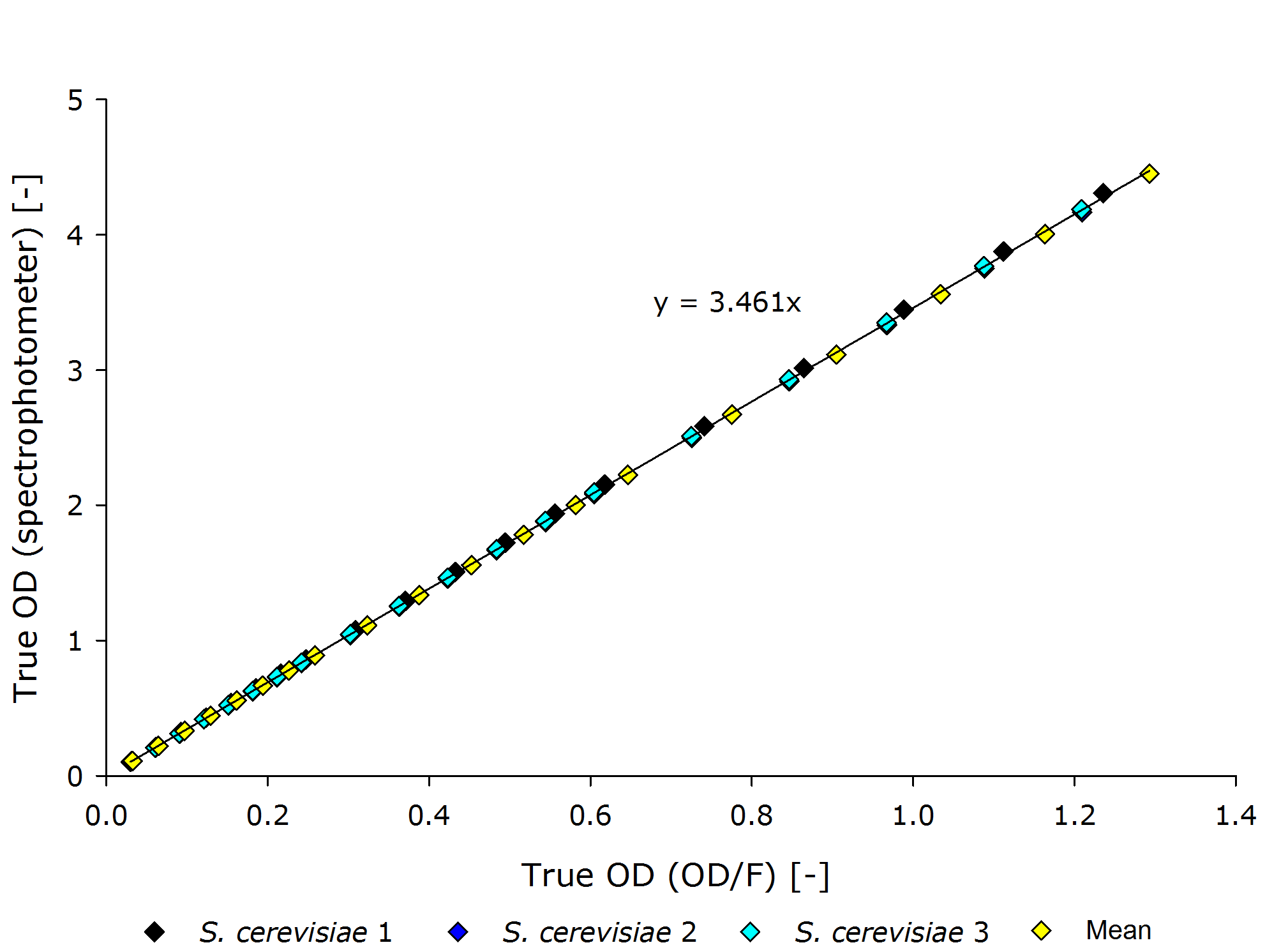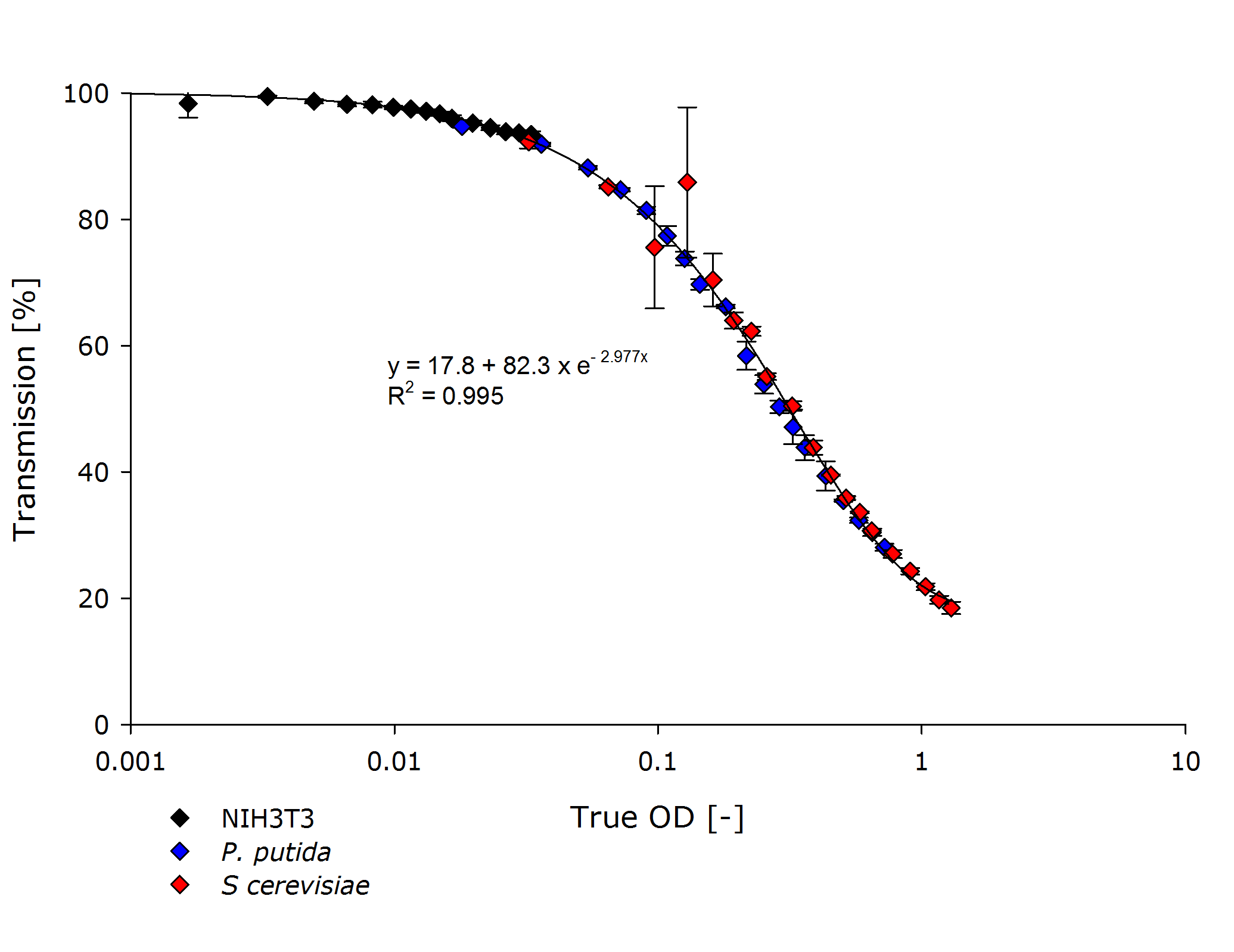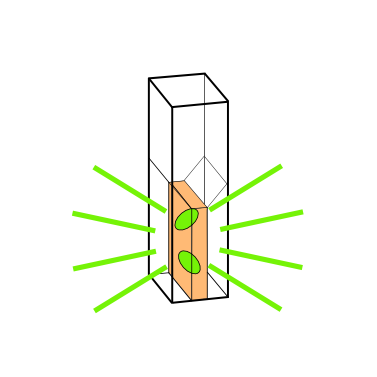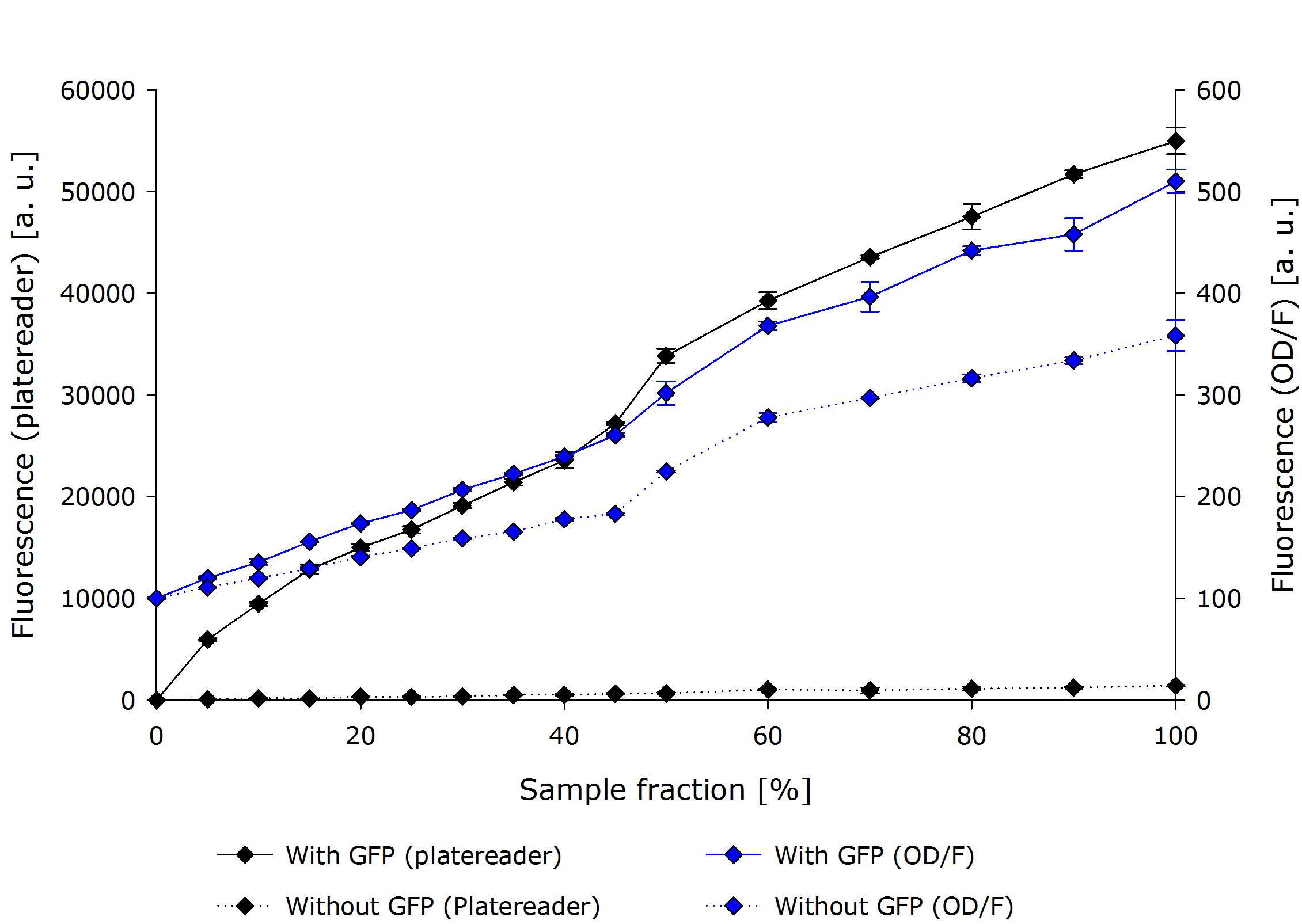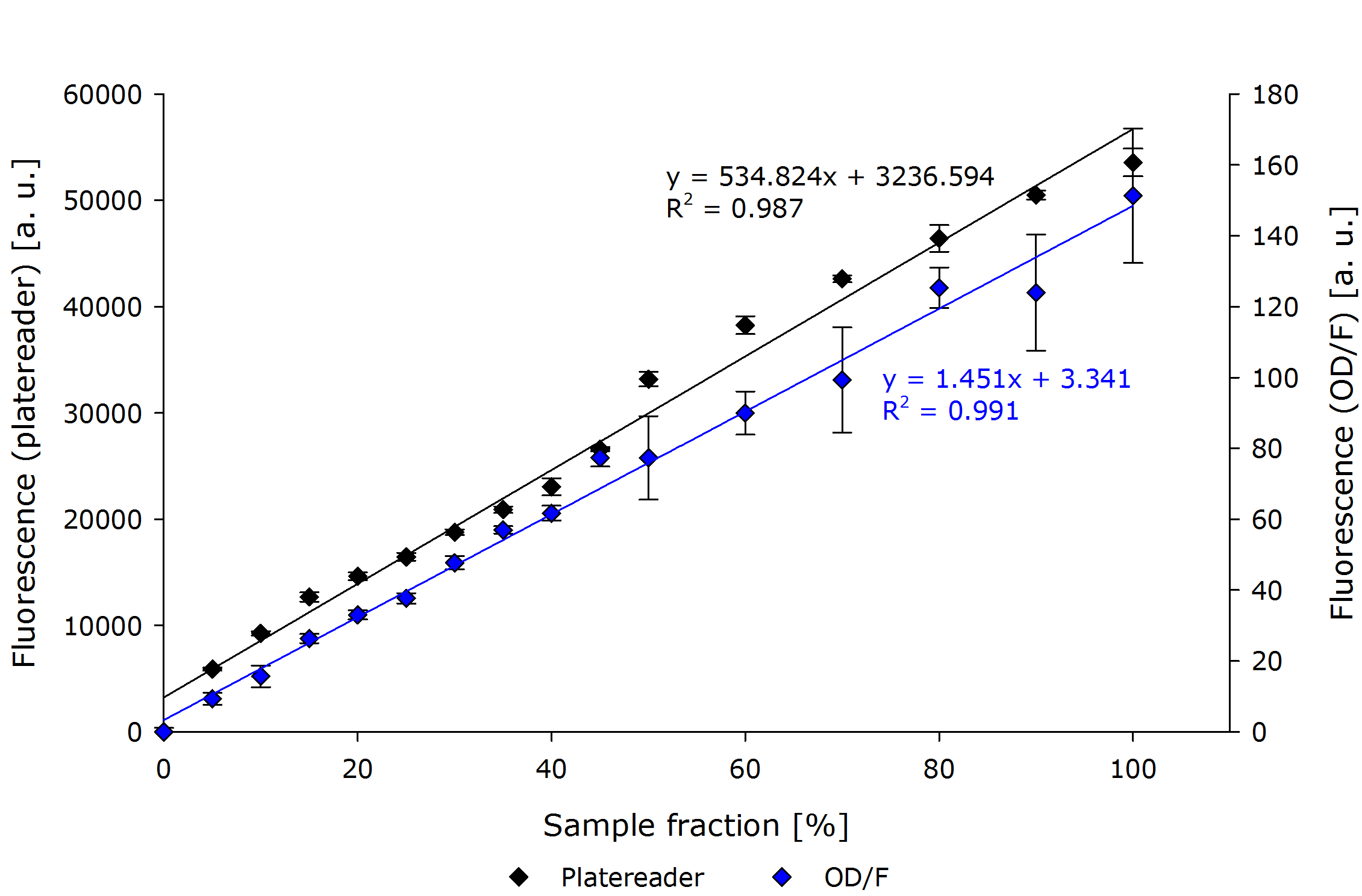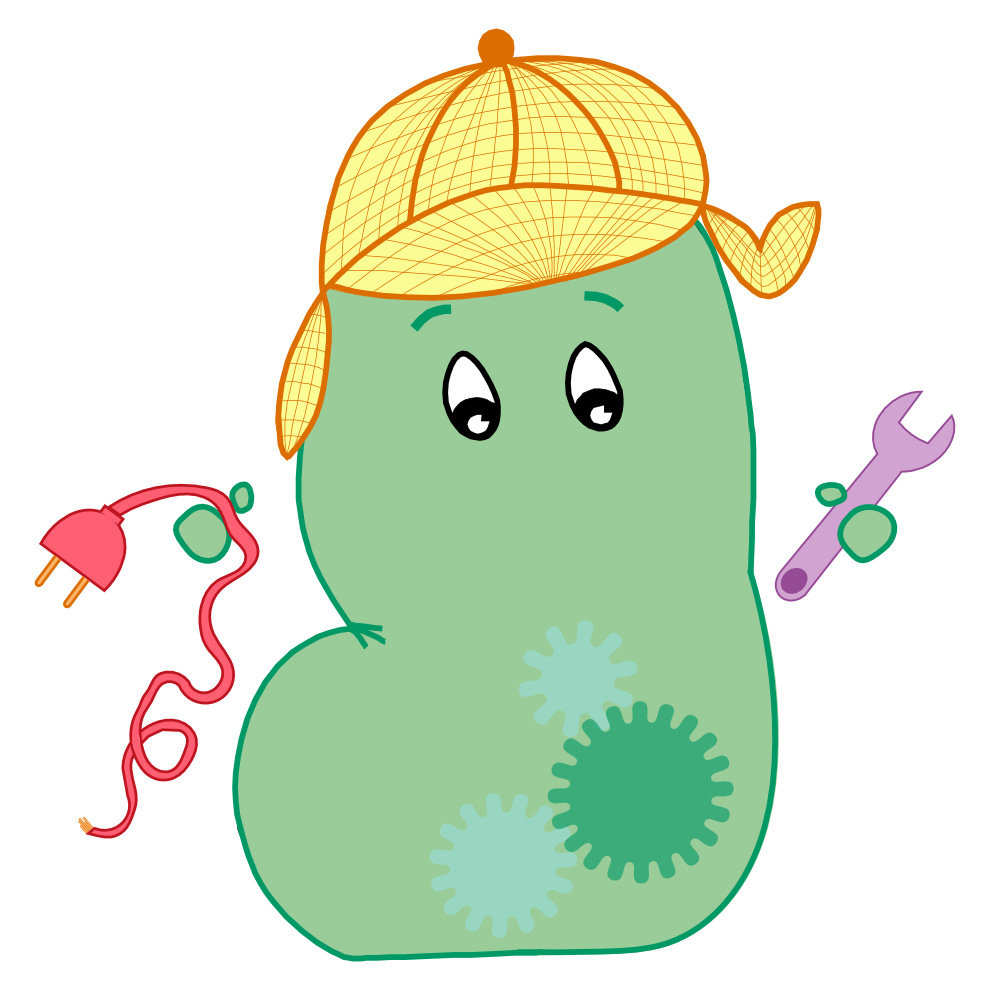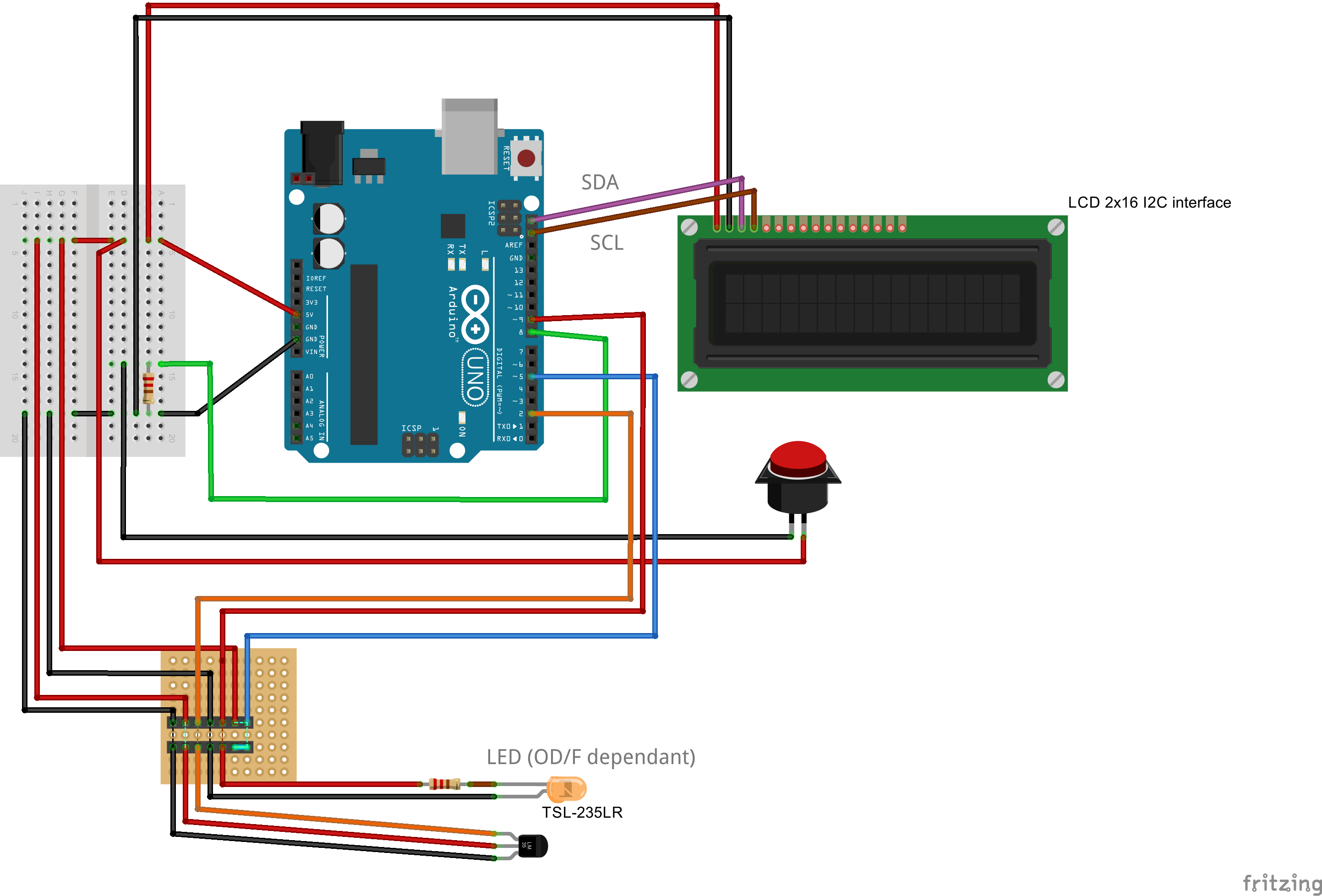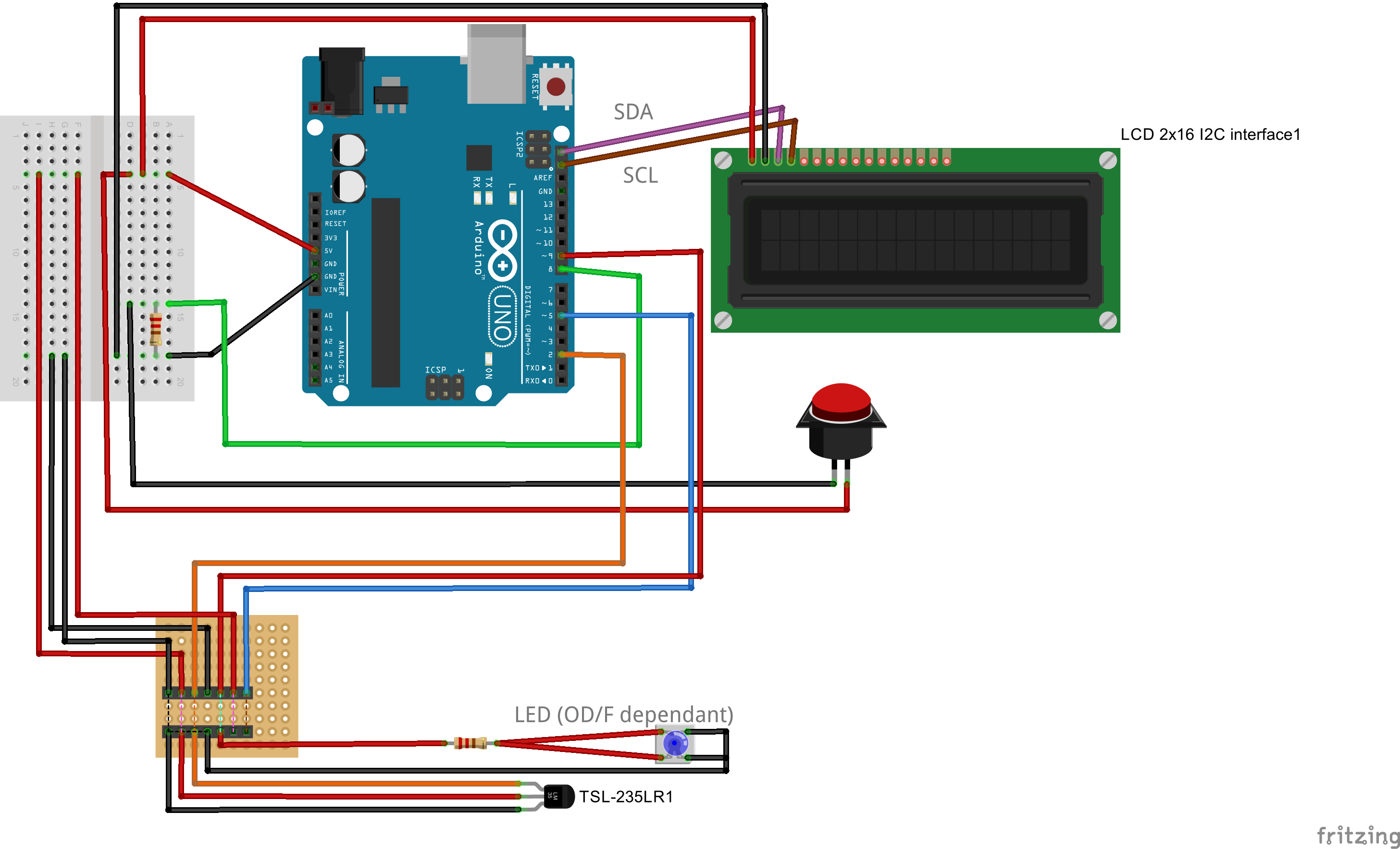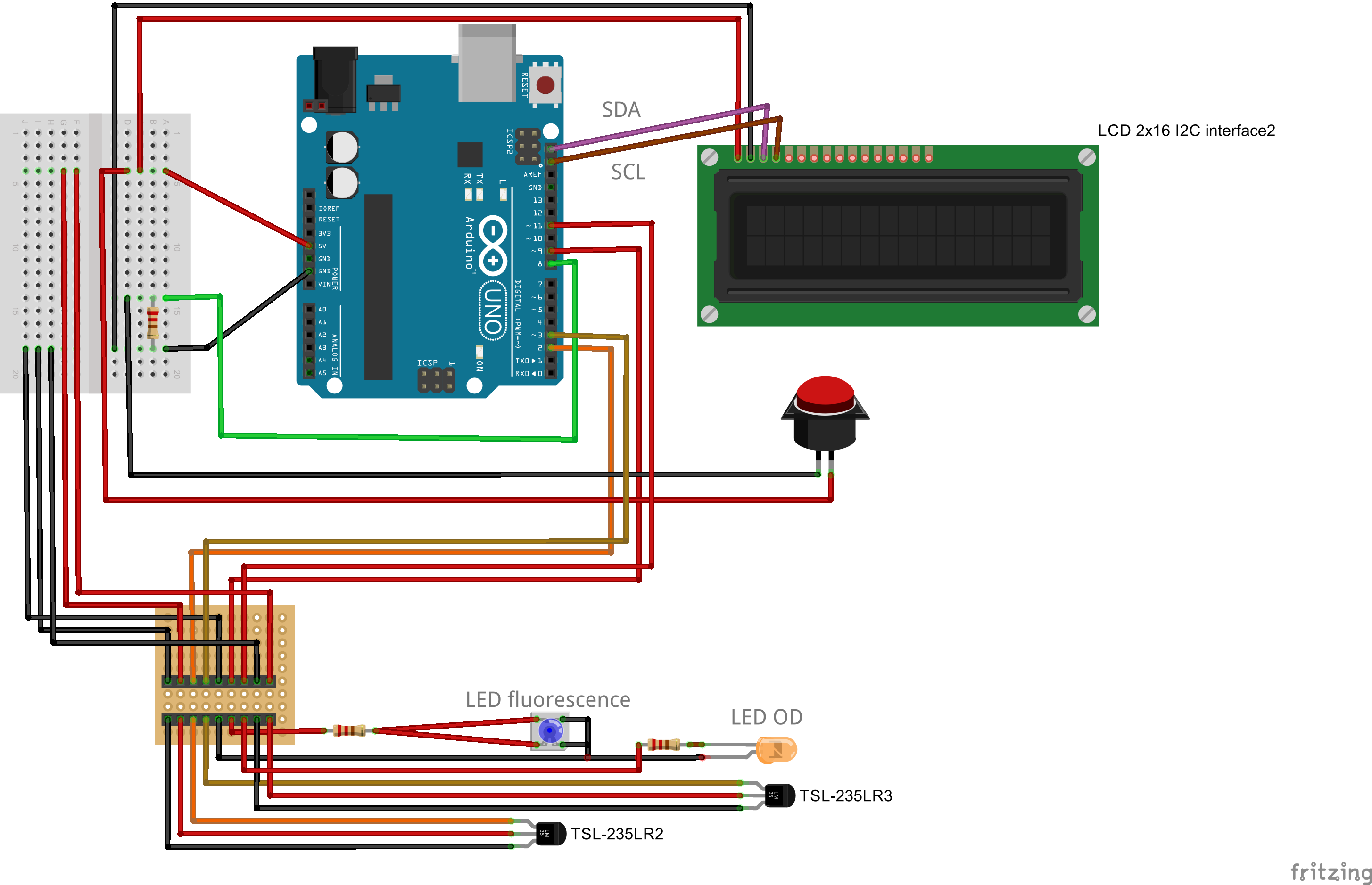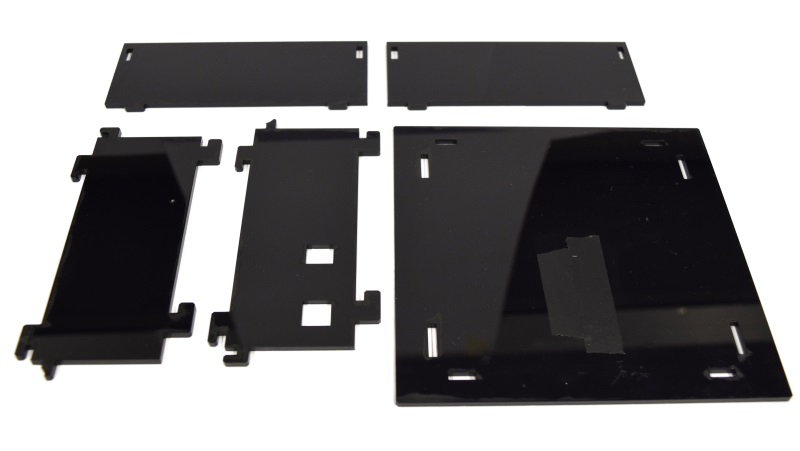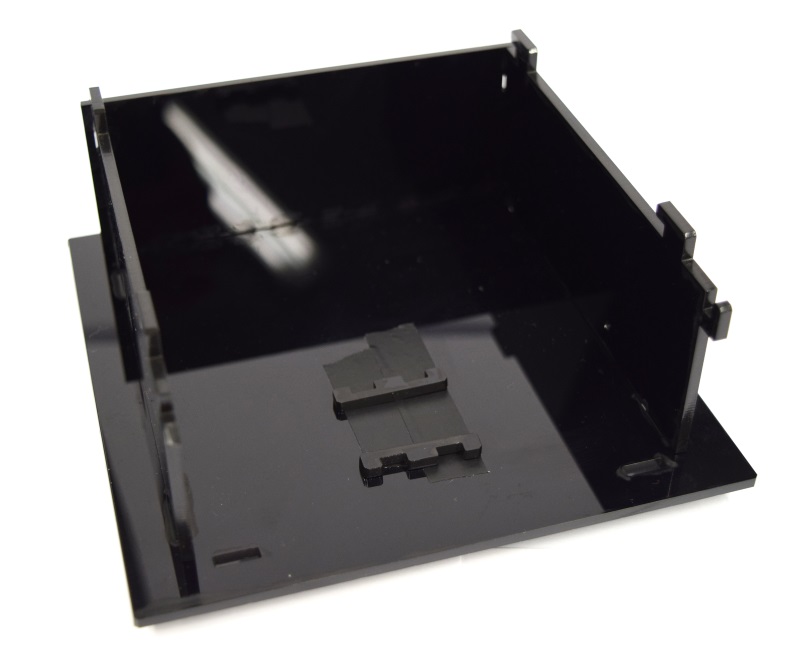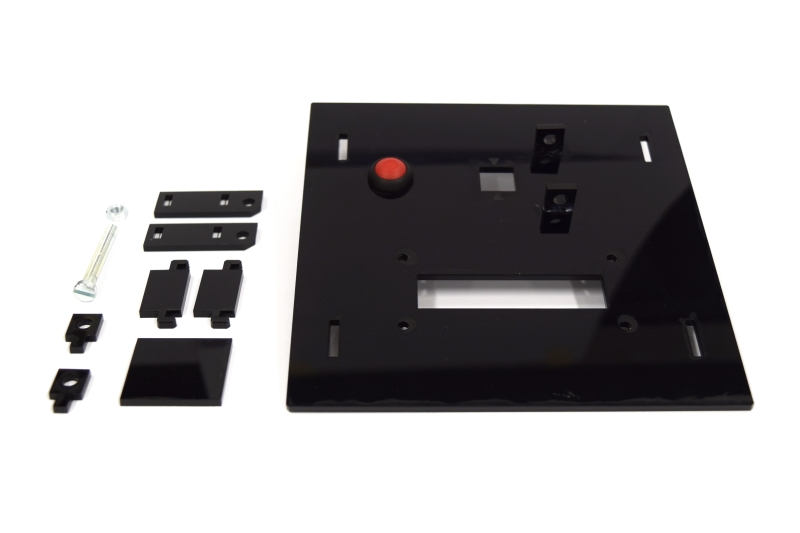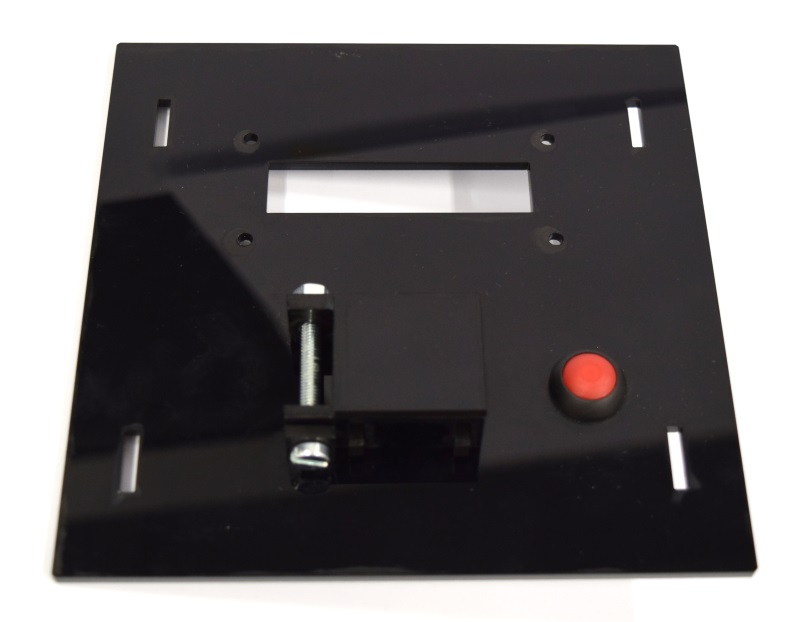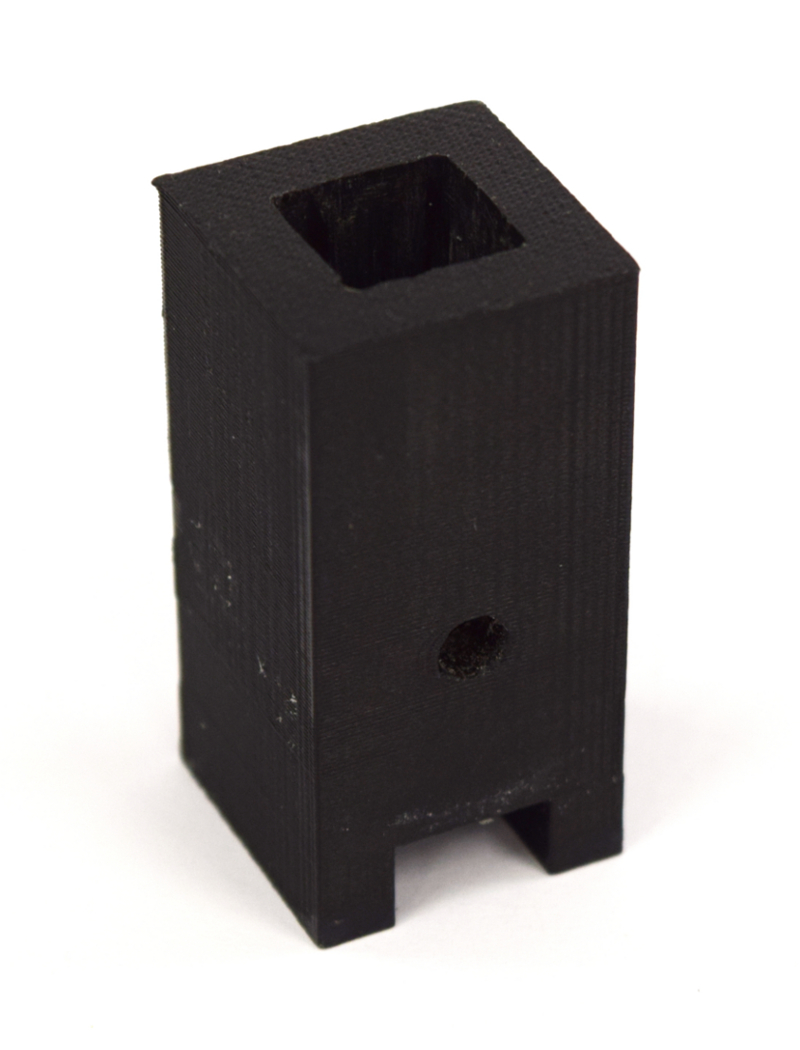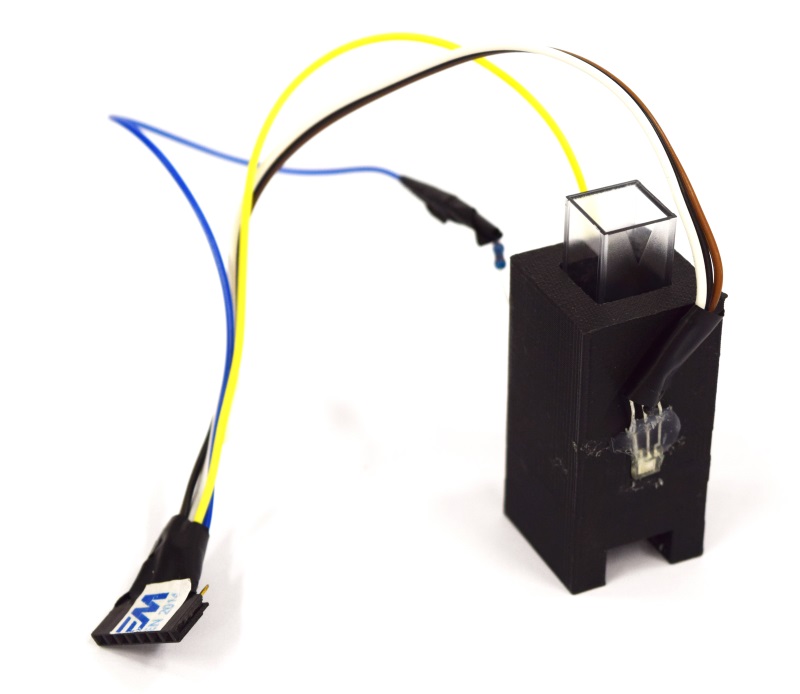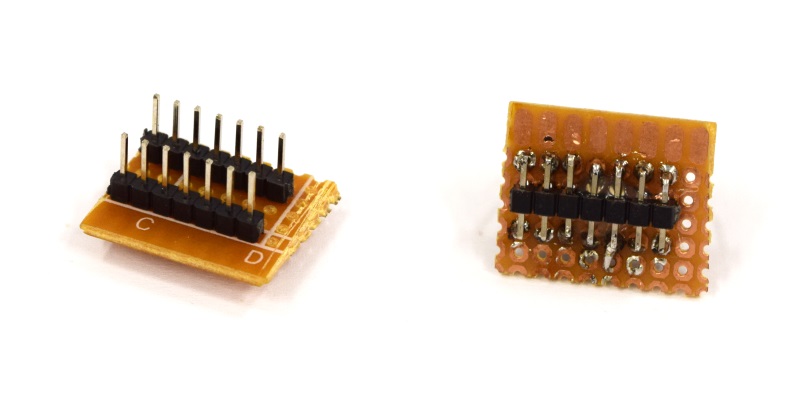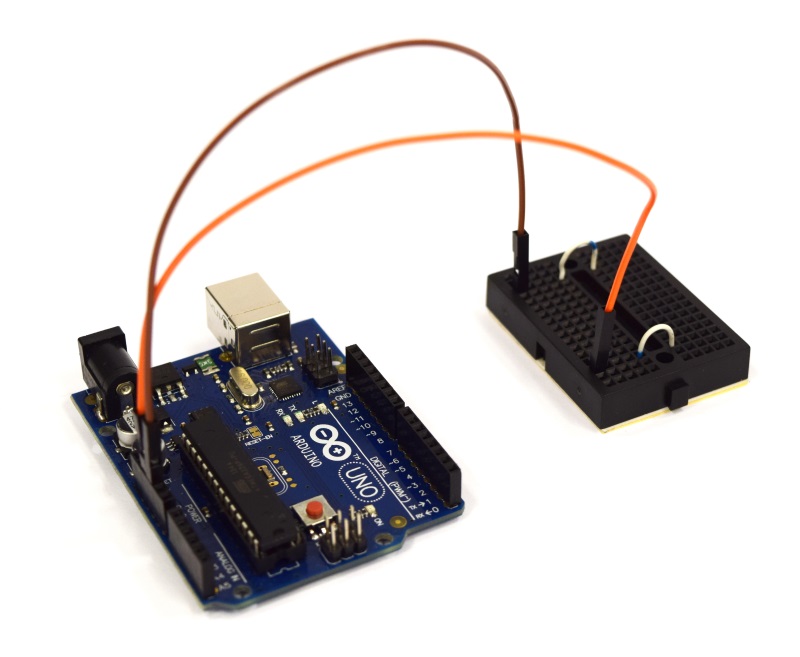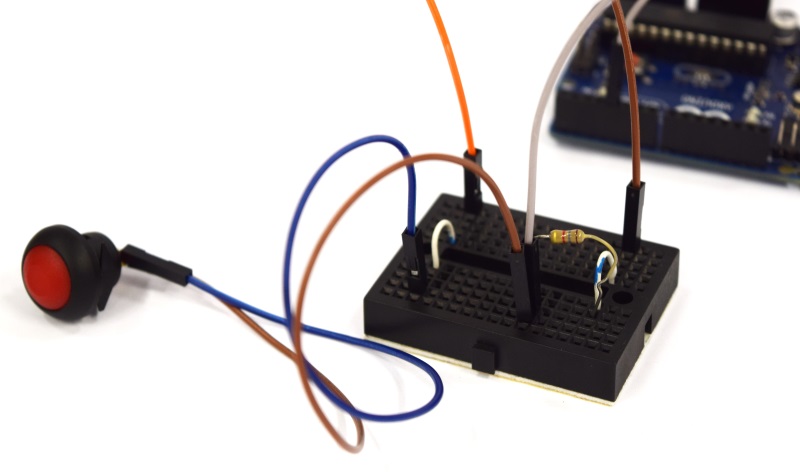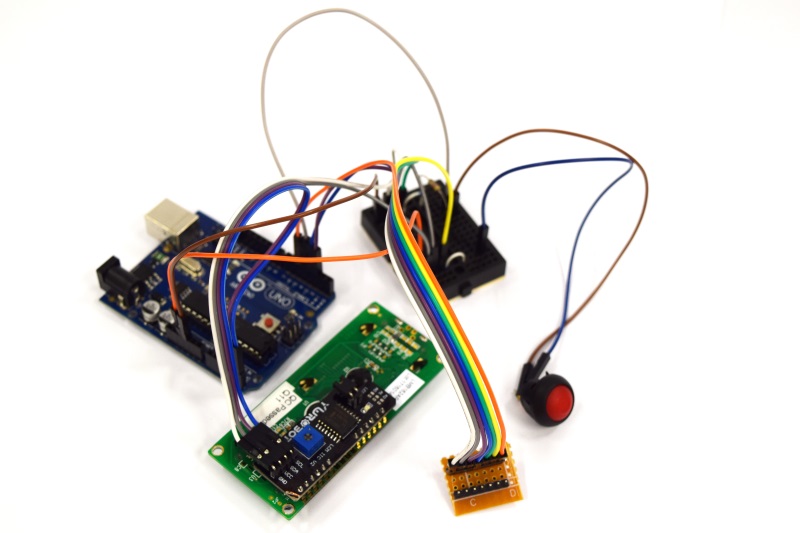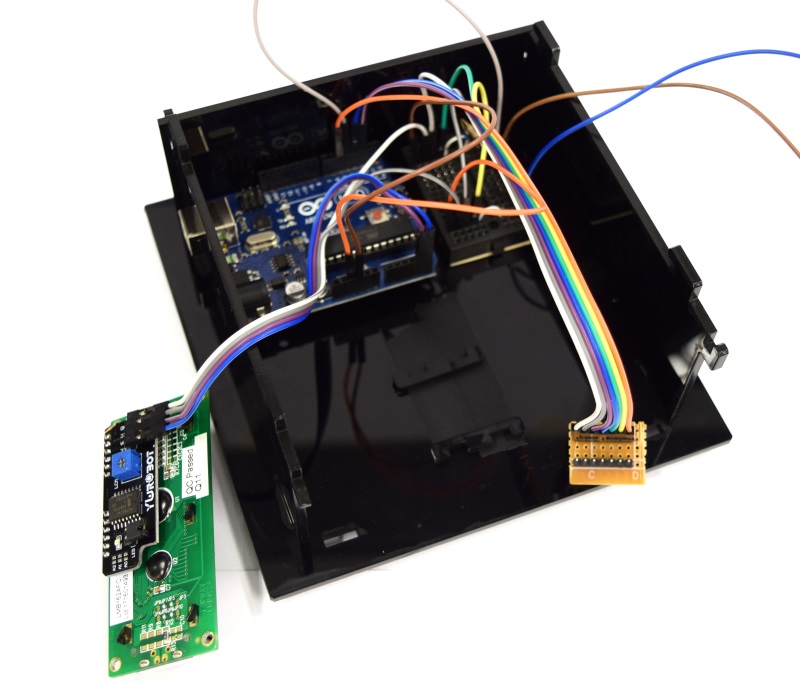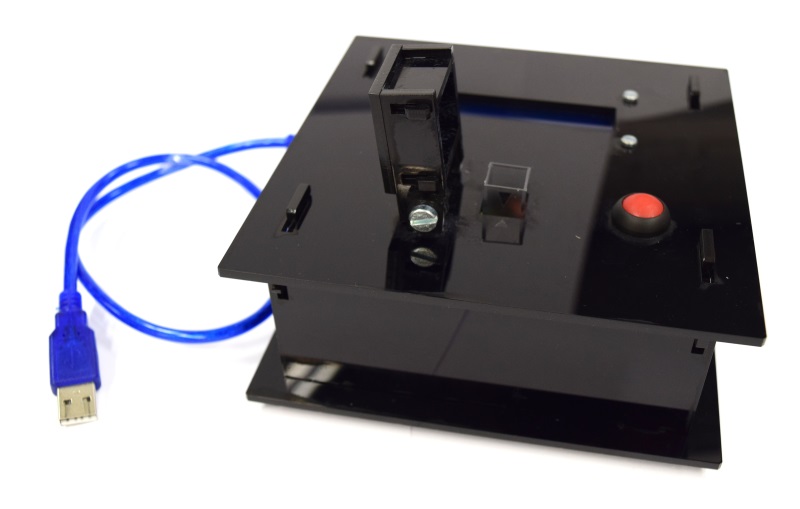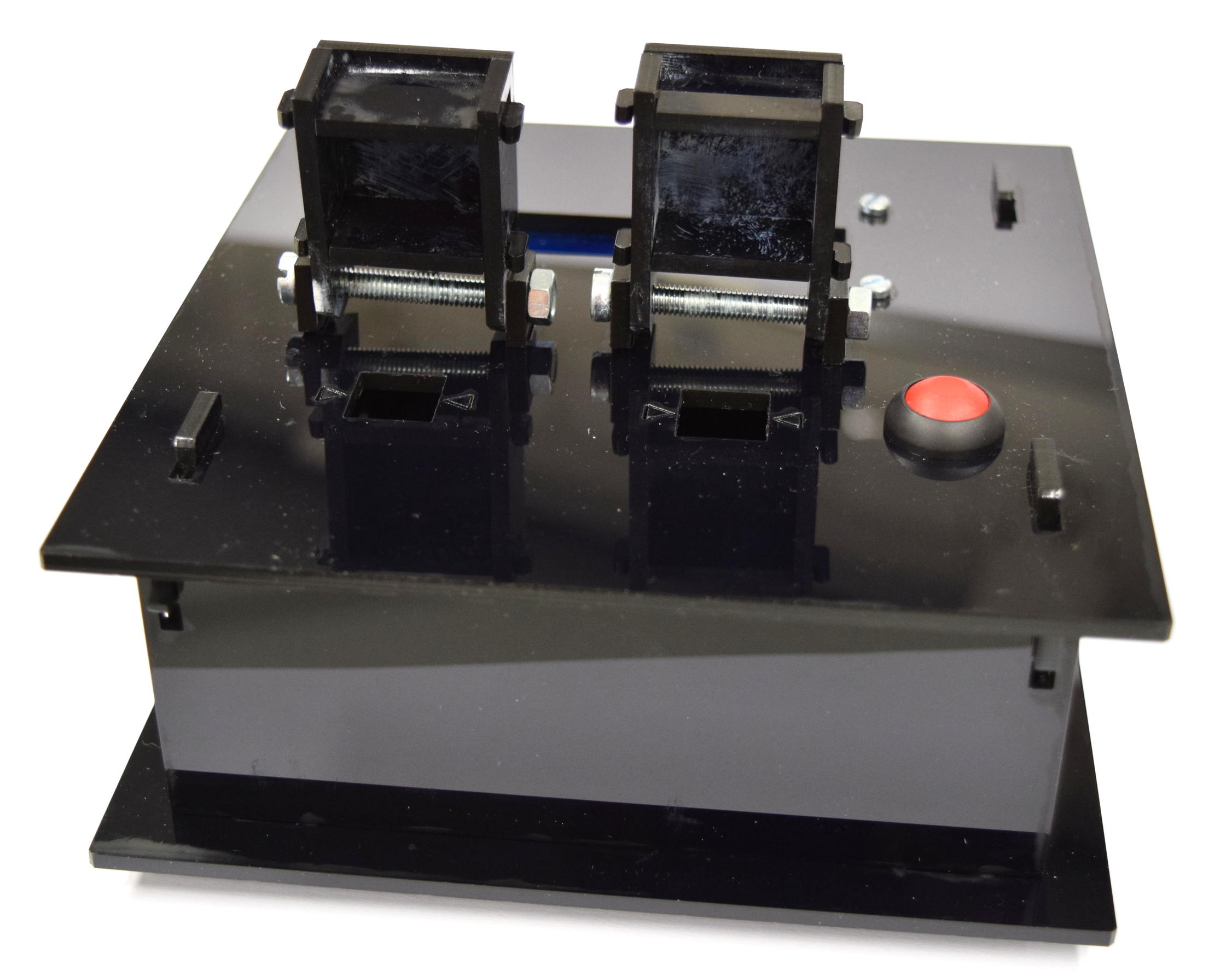Team:Aachen/Notebook/Engineering/ODF
From 2014.igem.org
(→OD Device) |
(→Linearity) |
||
| Line 120: | Line 120: | ||
Eventually, using the dark greenish [http://leefilters.com/lighting/colour-details.html#736 Twickenham Green] filter only little amounts of light shorter than 500 nm gets through, reducing any bias from excitation illumination significantly. Unfortunately, the transmission rate of this filter is quite bad, 20% only, for the target emission wavelength of 511 nm. | Eventually, using the dark greenish [http://leefilters.com/lighting/colour-details.html#736 Twickenham Green] filter only little amounts of light shorter than 500 nm gets through, reducing any bias from excitation illumination significantly. Unfortunately, the transmission rate of this filter is quite bad, 20% only, for the target emission wavelength of 511 nm. | ||
| - | == Linearity == | + | == Linearity of the Hardware Sensor == |
<span class="anchor" id="lin"></span> | <span class="anchor" id="lin"></span> | ||
It is crucial that the selected hardware is mapping reality into the digital world of our $\mu$-Controller. | It is crucial that the selected hardware is mapping reality into the digital world of our $\mu$-Controller. | ||
| Line 130: | Line 130: | ||
{{Team:Aachen/Figure|align=center|Aachen 15-10-14 Linearity iFG.PNG|title=Linearity of TSL235R-LF sensor|subtitle=Dilution series of GFP expressing ''E. coli'' showing linearity between fluorescence count and dilution. The linearity of the chosen sensor can be determined.|width=700px}} | {{Team:Aachen/Figure|align=center|Aachen 15-10-14 Linearity iFG.PNG|title=Linearity of TSL235R-LF sensor|subtitle=Dilution series of GFP expressing ''E. coli'' showing linearity between fluorescence count and dilution. The linearity of the chosen sensor can be determined.|width=700px}} | ||
| + | |||
| + | We are measuring optical density using our in-house developed cuvette holder. | ||
| + | Particularly for optical density measurement, the amount of light shining through the sample is crucial. | ||
| + | If there is too few light, there will be not enough light registered at the sensor, and the resolution of the measurement shrinks. This should be prevented. | ||
| + | The chosen light to frequency sensor is reported to be very sensitive on the amount of light shining on it. | ||
| + | There are reports of the sensor breaking when put into [https://www.sparkfun.com/products/9768 sunlight on a nice day], and not being sensitive at both high light or low light [http://kesslerarduino.wordpress.com/author/kevinmkessler/page/2/ conditions]. | ||
| + | |||
| + | Commercial systems usually use a laser beam to shine through the sample. For reasons of available components, we omitted this in our plans. Finding a suitable orange laser is not easy. | ||
| + | Instead we chose an LED, which unfortunately scatters light, both in the spectrum as well as in all directions. | ||
| + | Using a filter we reduce the effect of scattering. | ||
{{Team:Aachen/BlockSeparator}} | {{Team:Aachen/BlockSeparator}} | ||
Revision as of 20:10, 17 October 2014
|
|
|
|
|
|
 "
"
